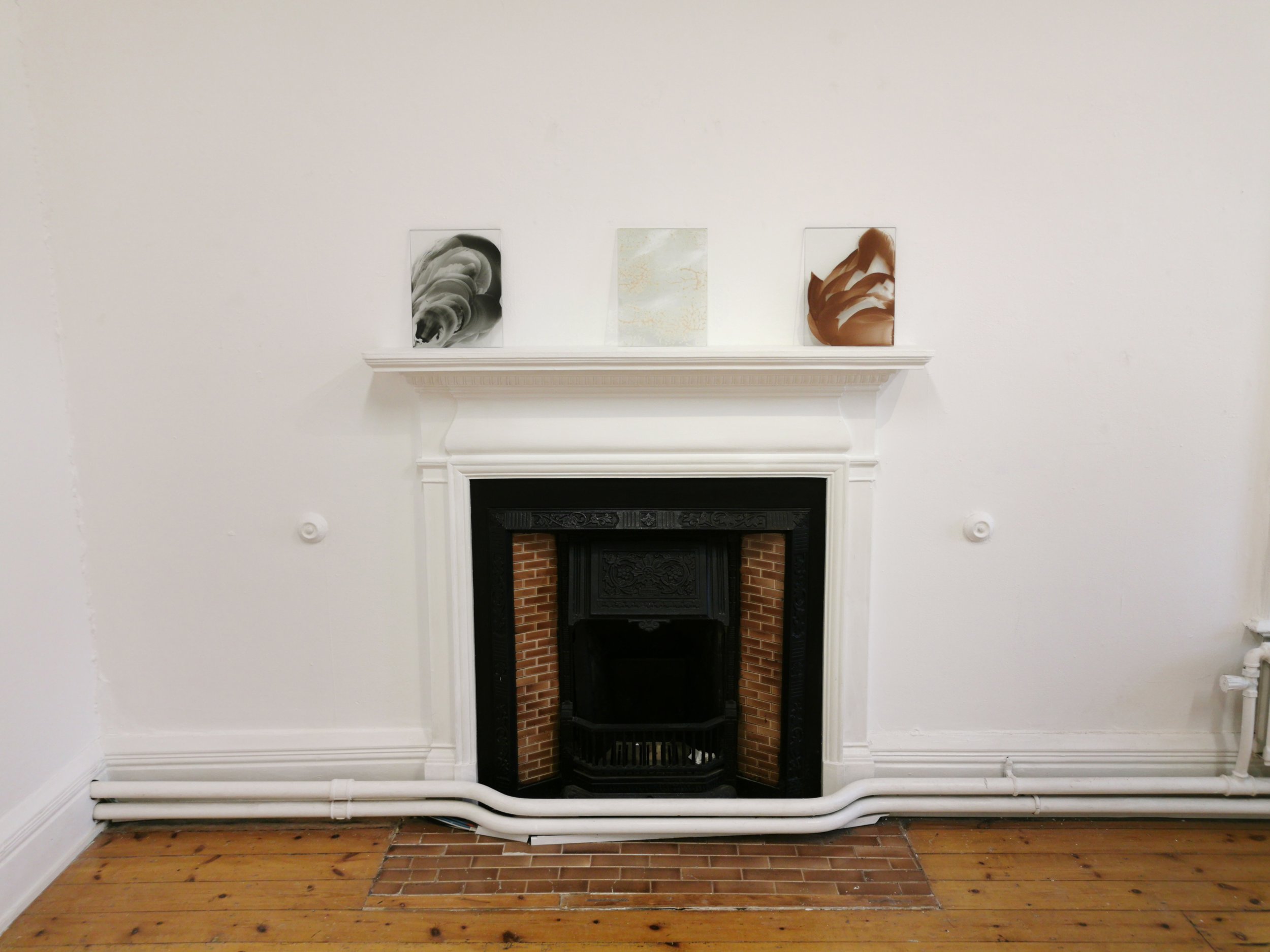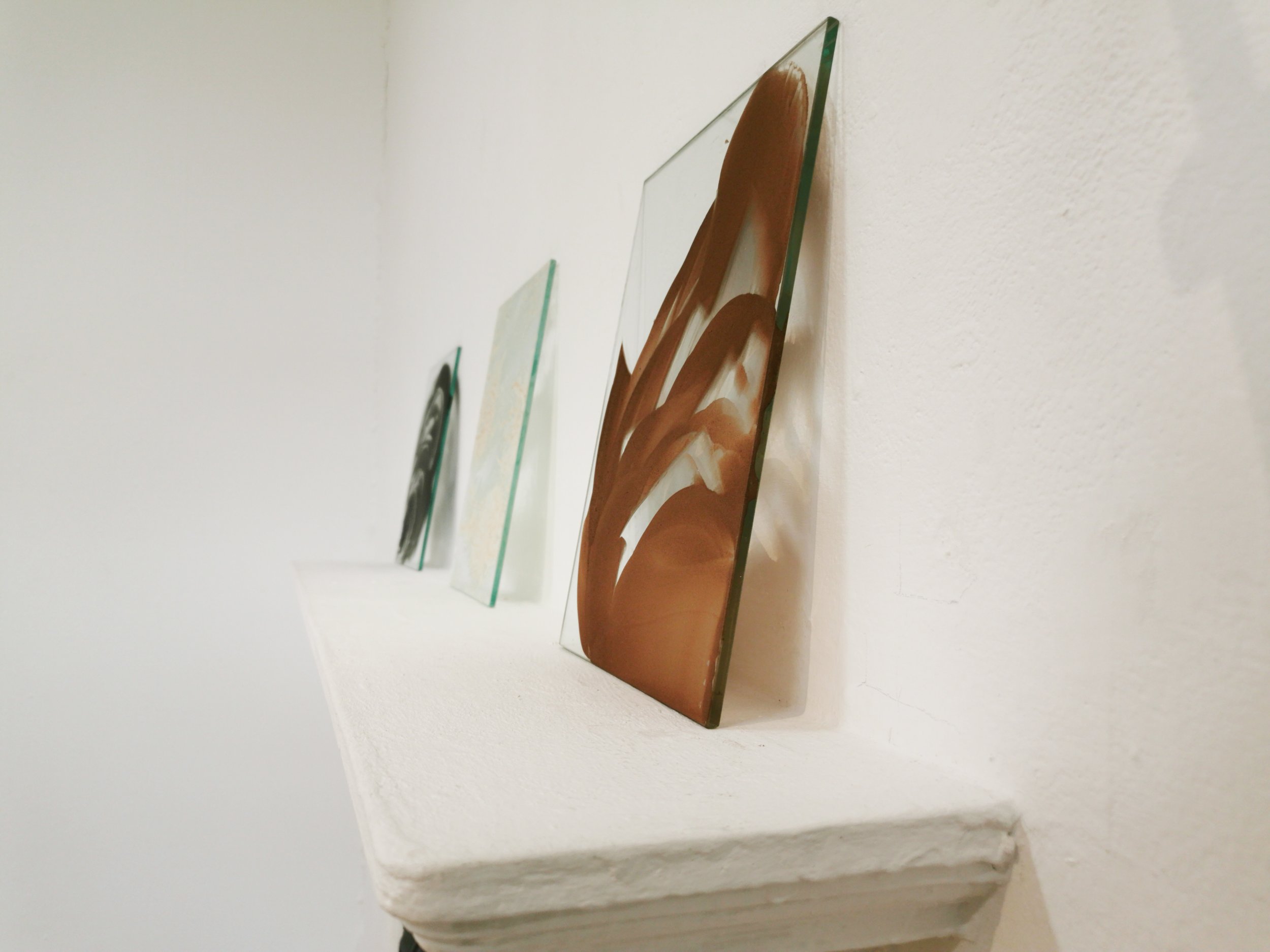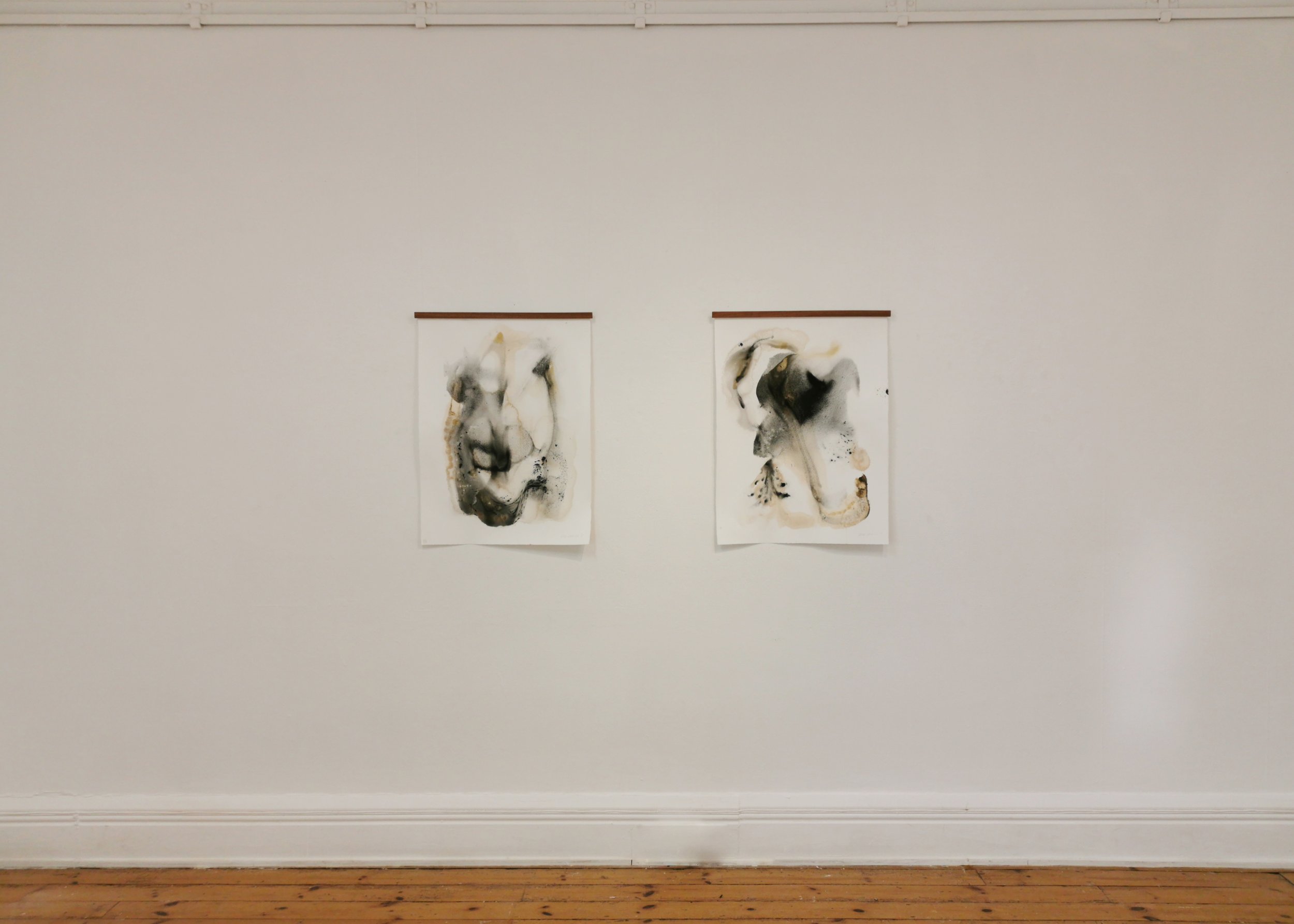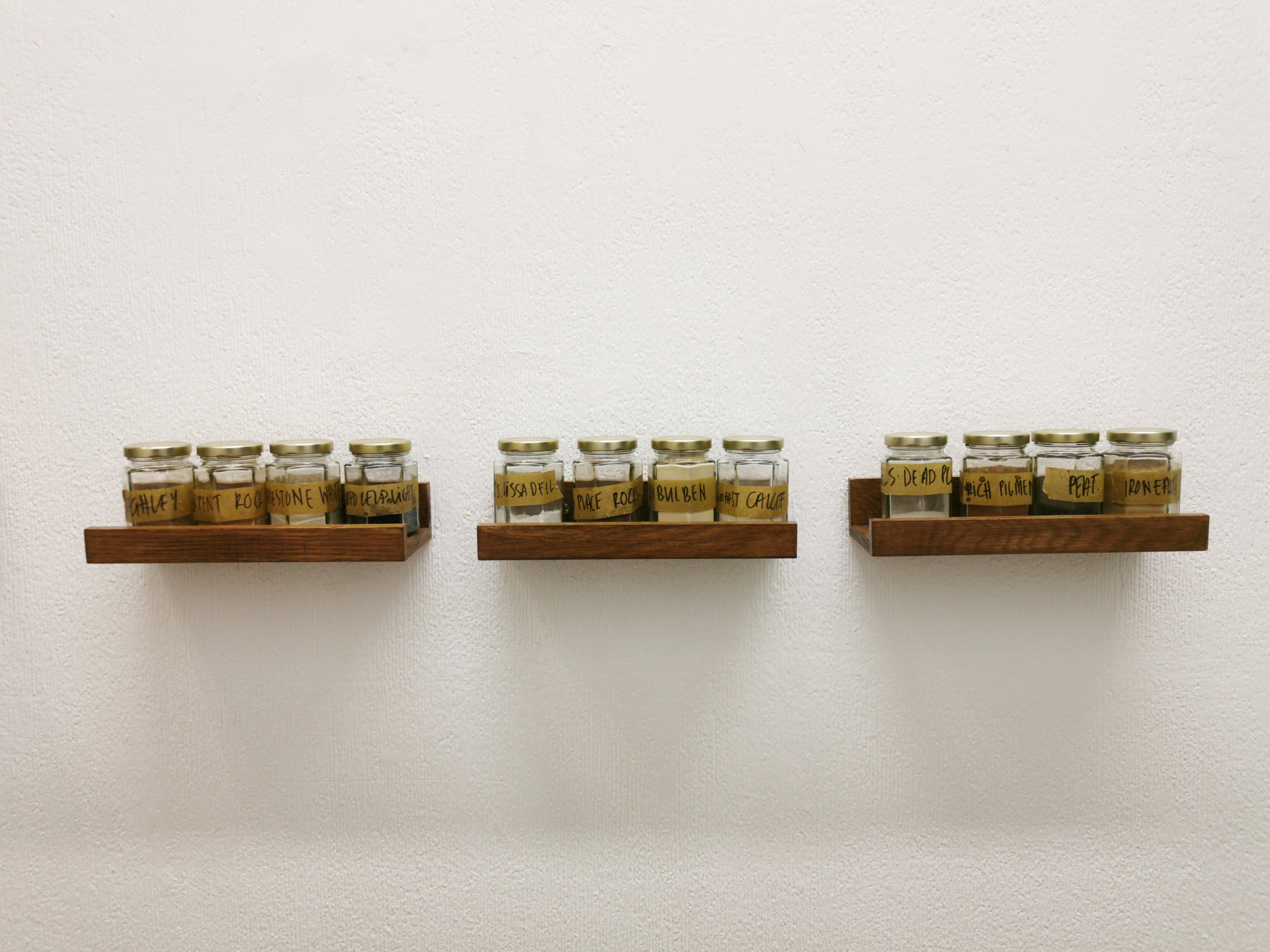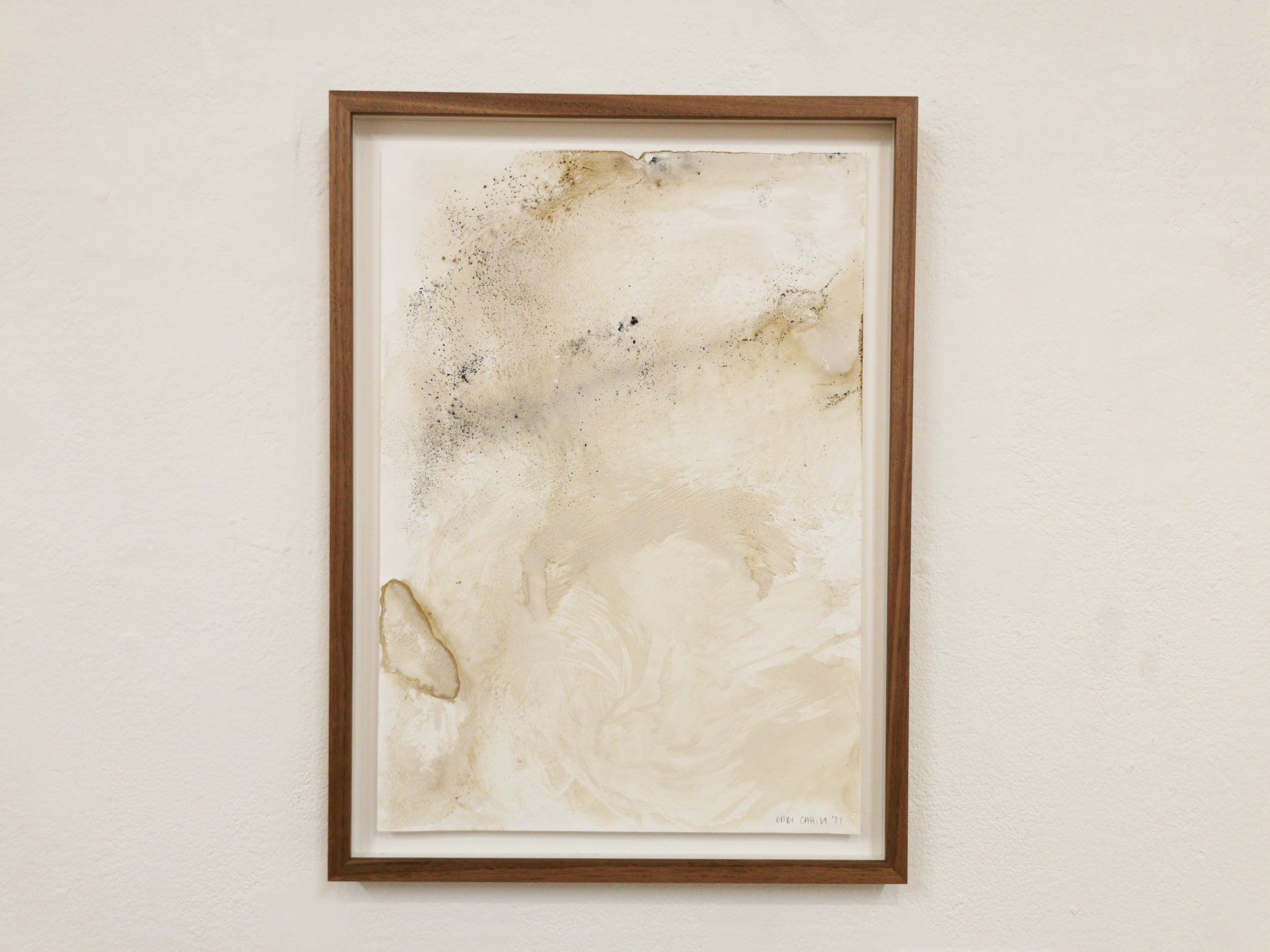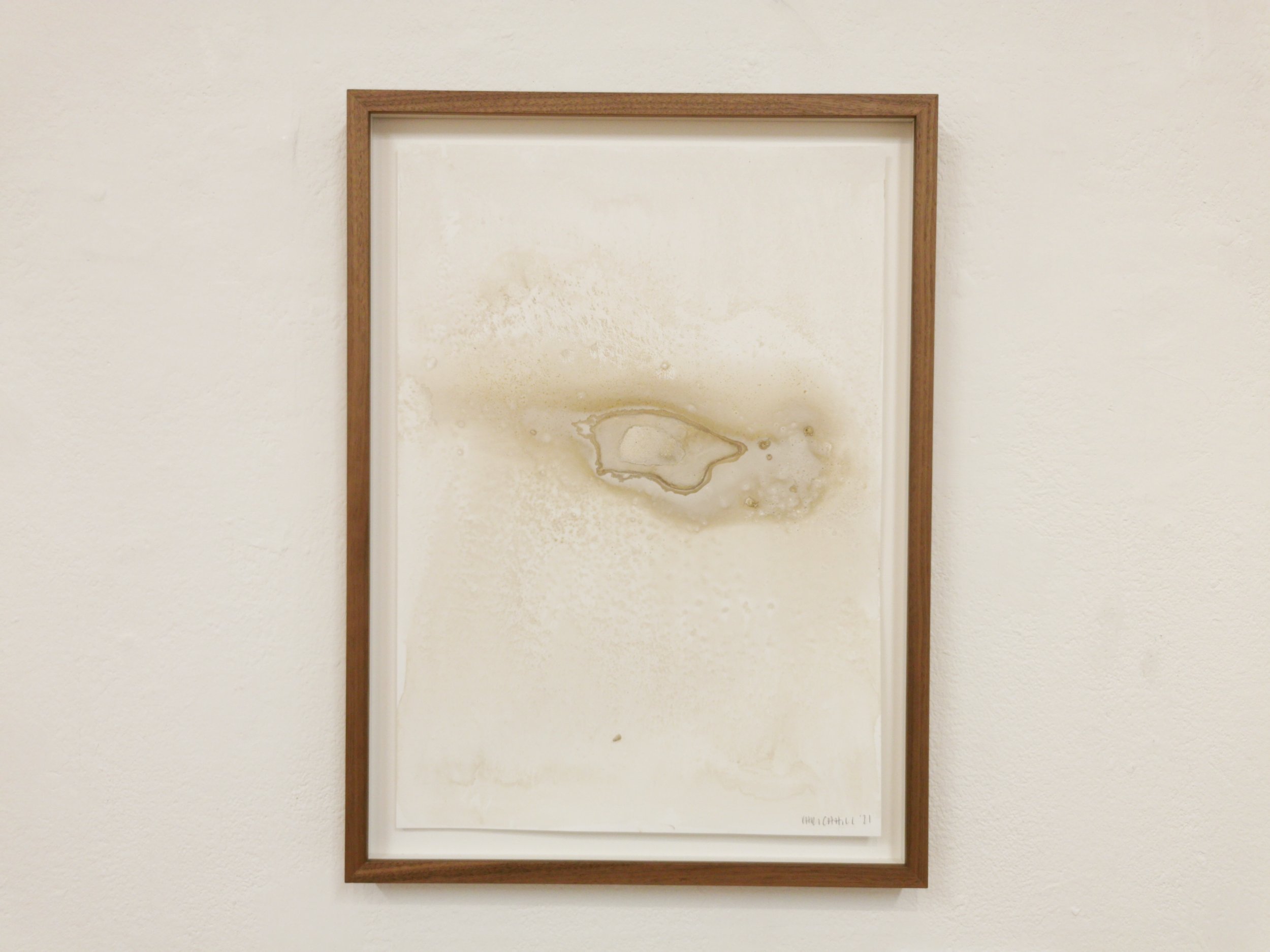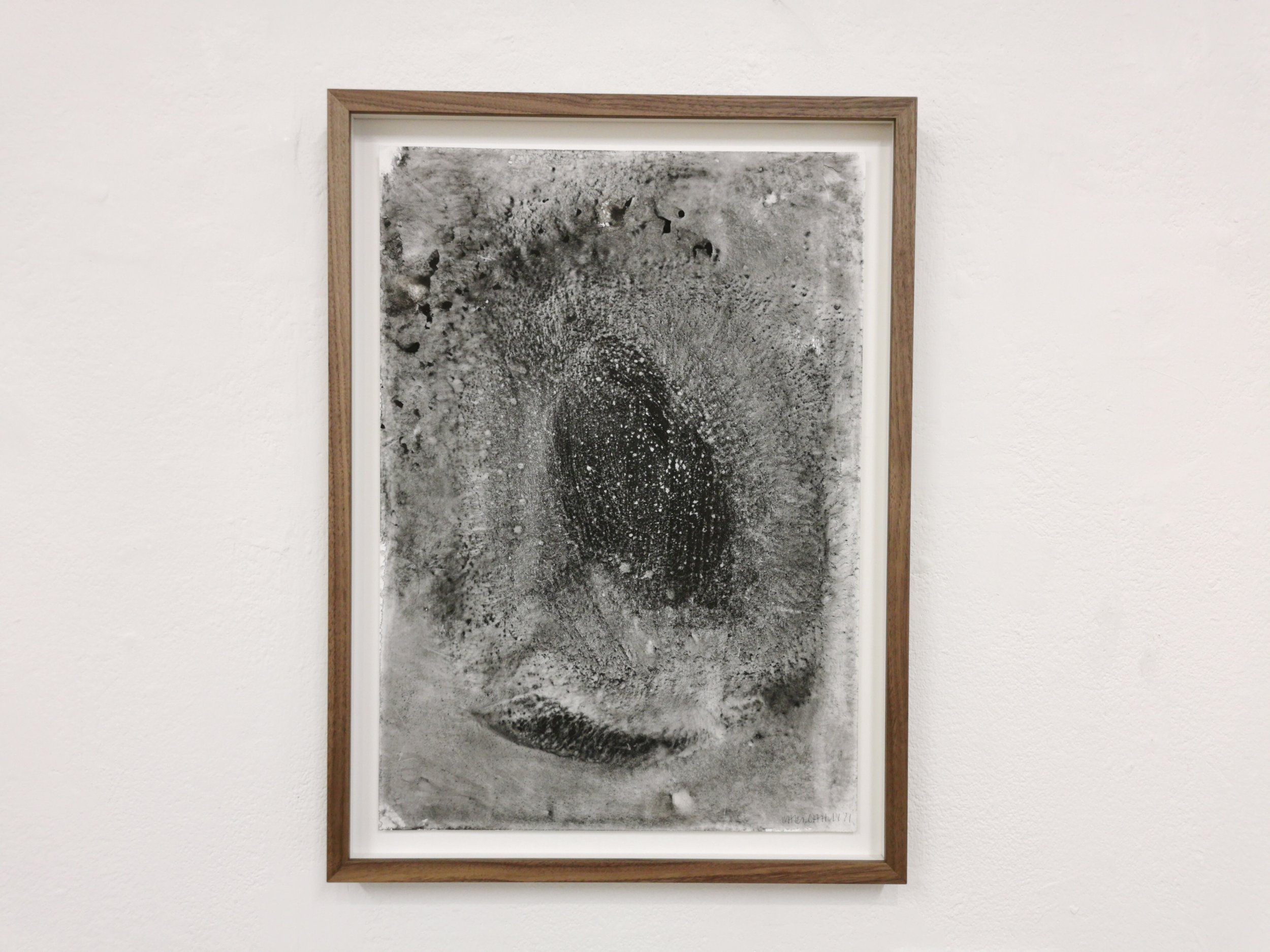These works trace the landscape of North Sligo through the pigments and inks derived from natural materials at Raghly, Lissadell, Ballyconnel, Benbulben. There is a contrast between the ancient geological fossils and formations and the slippery soft organic terrains found at rock pools and shorelines. Colour is used as a marker of terrain. Each work responds to the idiosyncrasies of specific colours derived from the landscape as well as the surface it is applied to.
Colour is created through the process of crushing, grinding, charring and boiling natural materials. The works feature a spectrum of hues from iron rich yellow/orange ochres to a pale pallet derived from limestone, urchins and limpets to monochromatic charred kelp. Bladder wrack and kelp are synthesised into inks which allow a contrast in viscosity on the page.
For more information and to view availabel works please head over to my Works For Sale page or email me at karcahill@gmail.com.
These pieces are created using the same gestures seen in the process of working with pigments. Pigment and binder are mixed together by moving a glass muller over a glass slab, working the pigment in circular motions. The pigment is then scraped off the slab, ready to be used.
Cotton rag paper has been drenched in water. As the liquid soaks into the fibres it buckles and swells creating undulations across its surface. Layers of earth pigment are then applied to the surface, deepening is hues as it builds up in the troughs and dips. The pieces, seen as a whole, create a river-like map of the movement of colour, tracing how the different densities of pigment from different landscapes react to the surface of the paper. The works combine movement and stillness in how the pigment has been applied, allowing the eyes to travel across the terrain of the artwork.
Colour is applied to the page by drowning the surfaces in ink and paint. The surface is Yupo Paper, an interesting synthetic recyclable material that is completely waterproof. Without the ability to absorb into the surface the pigment is left behind after the evaporation process. This creates thin veil-like layers which can blend and bend across the page, gathering and depositing hues and tones as it rolls. The hues find their way around the page settling into their own rhythm as water does in the natural environment. The final drying process appears to suspend the colour between solid and liquid revealing distinct vistas.

